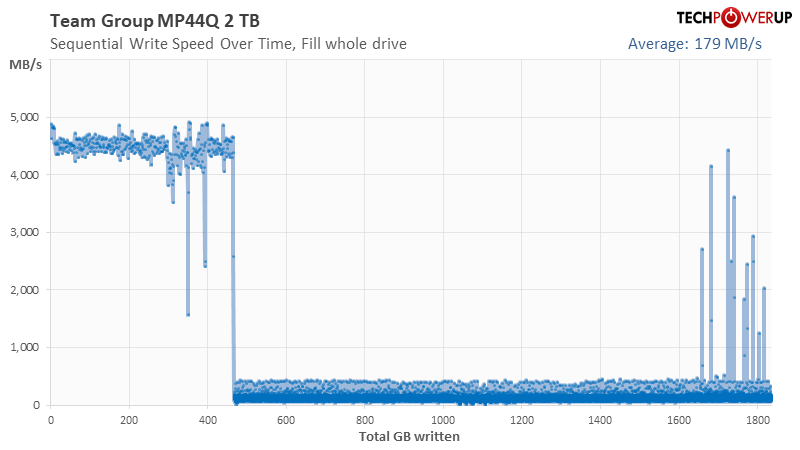- Joined
- May 14, 2004
- Messages
- 28,831 (3.74/day)
| Processor | Ryzen 7 5700X |
|---|---|
| Memory | 48 GB |
| Video Card(s) | RTX 4080 |
| Storage | 2x HDD RAID 1, 3x M.2 NVMe |
| Display(s) | 30" 2560x1600 + 19" 1280x1024 |
| Software | Windows 10 64-bit |
The Team Group MP44Q comes at a highly attractive pricing of $120 for the reviewed 2 TB model. Thanks to the MAP1602 controller, performance is impressive and can match famous drives like the Samsung 980 Pro. Only when the SLC cache is exhausted, this QLC-based SSD will fall behind.
Show full review
Show full review









